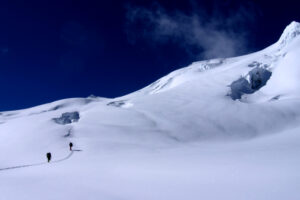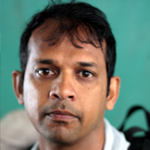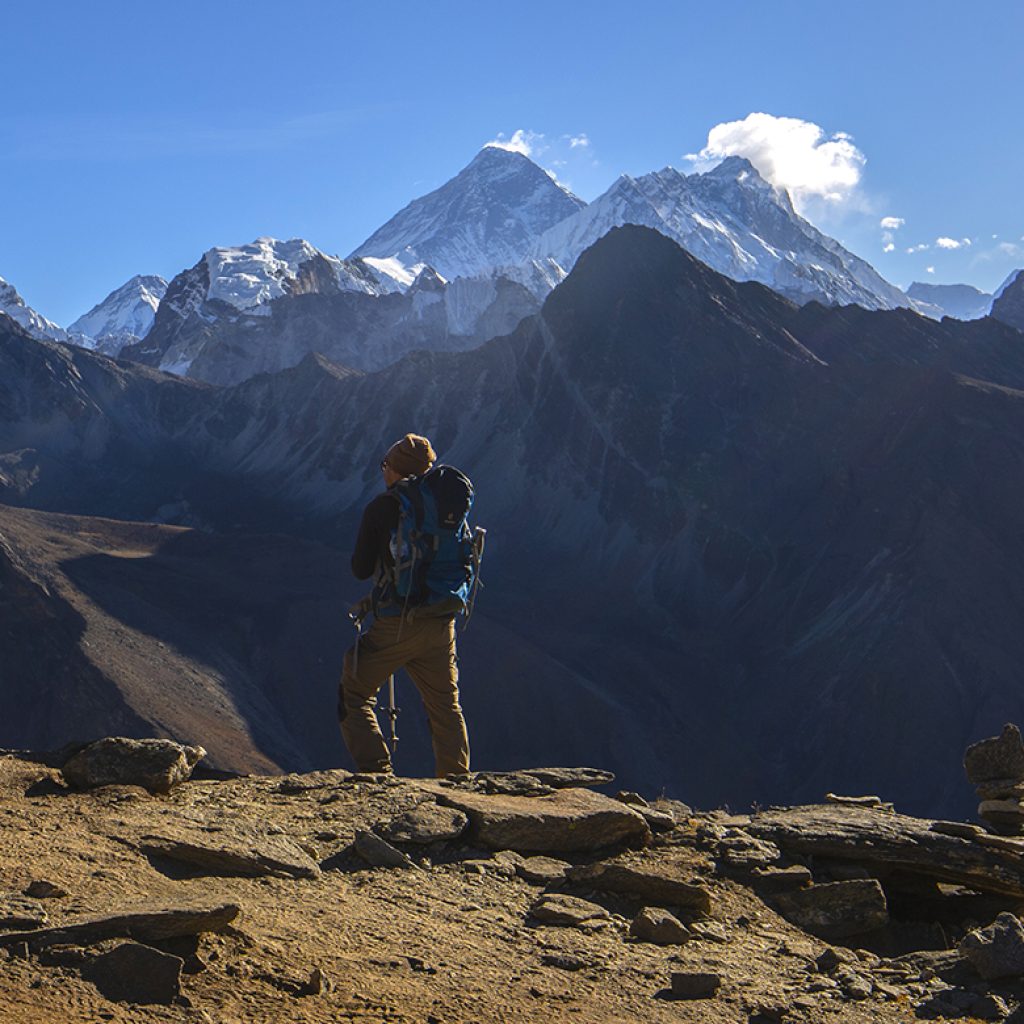Trekking Peak climbing in Nepal Overview
If you are looking for an adventurous trekking experience then, the mountains of Nepal have so much to offer you. Climb the greatest trekking peaks of Nepal to take your trekking to the next level. trekking peak in Nepal
Nepal is a land of adventure, with its diverse landscapes and stunning natural beauty. Trekking Peak climbing is one of the most popular and thrilling adventures in Nepal. The Trekking Peak climbing in Nepal is a perfect way to explore the Himalayan region and experience the local culture and traditions. Nepal has several peaks that are suitable for trekking, ranging from 6,500m to 7,000m in height. These peaks offer an ideal opportunity for both beginners and experienced trekkers to challenge themselves and enjoy a once-in-a-lifetime adventure.
Trekking Peak climbing in Nepal is not as difficult as climbing the high peaks like Mount Everest, but it requires a good level of physical fitness and endurance. Some of the popular Trekking Peaks in Nepal are Island Peak, Mera Peak, Pisang Peak, and Lobuche Peak. Island Peak, also known as Imja Tse, is the most popular trekking peak in Nepal. It is located in the Khumbu region and is considered to be one of the easiest peaks to climb.
Mera Peak is the highest trekking peak in Nepal, standing at 6,476 meters. It is located in the Hinku valley and is a popular choice for trekkers who want to experience high-altitude climbing. Pisang Peak is situated in the Annapurna region and is known for its stunning views of the Annapurna range. Lobuche Peak is located in the Everest region and is a challenging climb due to its steep ascent and icy terrain.
Trekking Peak climbing in Nepal usually takes between 15-20 days, depending on the peak you choose to climb. The trek starts with a scenic flight to Lukla, followed by a trek to the base camp of the peak. The trek is challenging and involves long hours of walking through rugged terrain, steep inclines, and rocky paths. The trek also involves crossing high altitude passes, which can be physically demanding and require a good level of fitness.
Best Time to Climb
The best time to climb Trekking Peaks in Nepal is during the spring and autumn seasons, which are considered to be the peak trekking seasons. The weather is mild and stable during these seasons, with clear skies and good visibility. The spring season starts from March to May, while the autumn season starts from September to November. These seasons offer the best weather conditions for trekking and climbing in Nepal.
Cost and Permit for Trekking Peak climbing
Permit for Trekking Peak climbing
Trekking Peak climbing in Nepal requires a permit from the Nepal Mountaineering Association (NMA). The permit cost varies depending on the peak you choose to climb and the number of days you plan to spend in the region. The NMA also requires trekkers to hire a licensed guide and porter for safety reasons. A licensed guide is essential as they are experienced in navigating the trails, understanding the local culture and customs, and can provide valuable insights into the region.
Cost for Trekking Peak climbing
The cost of Trekking Peak climbing in Nepal varies depending on the peak you choose to climb, the duration of the trek, and the services you require. The cost includes the permit fees, guide and porter fees, food and accommodation, and transportation costs. It is essential to research and compare the costs of different trekking agencies to ensure that you get the best value for your money.
Trekking Peak climbing in Nepal is an adventure of a lifetime, offering stunning views of the Himalayas, a chance to experience the local culture and traditions, and an opportunity to challenge yourself physically and mentally. However, it is essential to prepare well and ensure that you have the right gear and equipment for the climb. Proper preparation, including physical training, acclimatization, and mental preparation, is crucial to ensure a safe and enjoyable climb.
Gear and Equipment
The gear and equipment required for Trekking Peak climbing in Nepal include warm clothing, sleeping bags, trekking poles
Some of the popular trekking peaks in Nepal
Island Peak (Imja Tse):
Island Peak is one of the most popular trekking peaks in Nepal. Located in the Khumbu region, it stands at 6,189m. It offers a moderate climb with some technical sections, making it a perfect choice for beginners who want to experience high altitude climbing. The climb to the summit offers stunning views of the Khumbu region, including Mt. Everest, Lhotse, and Makalu.
Mera Peak:
Mera Peak is the highest trekking peak in Nepal, standing at 6,476m. It is located in the Hinku valley in the Everest region and is a popular choice for experienced trekkers who want to challenge themselves with a high-altitude climb. The climb offers panoramic views of the surrounding mountains, including Everest, Lhotse, Cho Oyu, and Makalu.

Lobuche Peak:
Lobuche Peak is a challenging trekking peak located in the Everest region. It stands at 6,119m and offers a steep climb with technical sections. The climb offers stunning views of the Khumbu region, including Mt. Everest, Lhotse, and Nuptse.
Pisang Peak:
Pisang Peak is located in the Annapurna region and stands at 6,091m. It offers a moderate climb with some technical sections, making it a perfect choice for beginners who want to experience high-altitude climbing. The climb offers panoramic views of the Annapurna range, including Annapurna II, Annapurna III, and Annapurna IV.
Chulu East:
Chulu East is located in the Annapurna region and stands at 6,584m. It offers a challenging climb with some technical sections, making it a perfect choice for experienced trekkers who want to challenge themselves with a high-altitude climb. The climb offers panoramic views of the surrounding mountains, including Annapurna, Dhaulagiri, and Manaslu.

Yala Peak:
Yala Peak is located in the Langtang region and stands at 5,520m. It offers a moderate climb with some technical sections, making it a perfect choice for beginners who want to experience high-altitude climbing. The climb offers panoramic views of the Langtang region, including Langtang Lirung, Dorje Lakpa, and Gangchempo.
These are just a few examples of the many trekking peaks in Nepal. Each peak offers a unique climbing experience and stunning views of the surrounding mountains. It’s important to choose a peak that is suitable for your level of experience and physical fitness, and to make sure you have proper gear and equipment for the climb.



